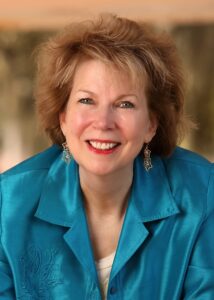By: Monica Anaya Heimes, Early Educator, [email protected]
Early Childhood Education is defined as “activities or experiences that are intended to effect developmental changes in a child prior to their entry into elementary school”. This takes place in settings Monday-Friday in childcare facilities. Many childcare facilities play a huge role in providing a structured, routine, safe environment for children to learn from birth-school age. It is believed that this type of environment is the building blocks to school readiness and the future of a child’s love for learning.
As the pandemic made an impact on the 2020–2021-year, early educators were faced with the challenge of educating children who were experiencing a world pandemic. Many of the children in the care of early educators had parents working in the community or in their homes for their employers. Educators noticed a lack of stability in their work environments with quarantines, employment and mental health declines. Tayler Pipal, a teacher in the field for 5 years said “the most challenging thing about teaching during a pandemic was finding ways to keep my class of toddlers healthy, as well as myself. Toddlers are building their immune systems so they frequently have colds and runny noses, but during a pandemic it adds another level of worry.” During this time many children were experiencing learning setbacks and fewer social experiences. Child care settings were essential work environments with early educators labeled essential workers. This label placed child care facilities at a high demand in order for other essential workers to remain working.
The challenge with educating children in a pandemic came from the impact of the CDC, individual states and licensing departments. Early educators were faced with opening their classroom doors with guidelines provided by their local licensing departments. These guidelines took recommendations from the CDC and individual states. Teachers are assigned a teacher to child ratio. Each child care center maintains a ratio to provide a safe environment. The licensing guidelines kept the same ratios per classroom but in addition placed children in environments with the CDC was requesting to have gatherings of 10 or less people. Many of these classroom ratios exceed 10 children in a setting.
Licensing also recommending to maintain social distancing activities and to keep activities with social distancing. Due to a set-up of a classroom environment, it became nearly impossible to offer these social distancing activities with the educator to child ratios. They would also switch many of their normal routine procedures for opening and closing classrooms in order to maintain licensing guidelines. Centers would not allow parents to enter into the program, they would also have temperature checks before entering into the classrooms and some centers placed a mandating mask in classroom settings pending the age of the child.
Centers would also be faced with closing classrooms due to lack of staffing or a child being exposed to COVID-19. Marlena Mozal has been teaching for 8 years and stated “the most challenging thing about teaching during a pandemic has been keeping a classroom of eleven children healthy, happy and safe while personally navigating COVID-19 and the changes that come with it. With parents not being allowed in the building, it has taken a lot of extra work and time to try to build the positive school/ home connection that all teachers stive for.” Many workers in the field were in the middle of a child care crisis.
In 2022 educators are hopeful for progression in the field of child care education. Early education is at an ultimate need for our society to function.
